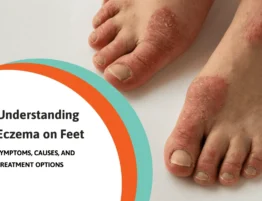

Podiatrists Recommend Laser Removal as the best treatment option!
Fungal nails and onychomycotic nails are a common concern, and impact more than 20 percent of people overall. They are common in 75 percent of the senior population, but for most the problem is not a painful one but rather, an embarrassing problem. Many will say it;s just icky! When a nail becomes very thickened, it may become infected, or the fungus may deform the nail causing it to become ingrown.
What Does A Fungal Infection Look Like?
A fungal infection will usually cause the nail to be yellow and discolored. The nail may also have a brown discoloration. It may also become thickened and deformed. It may also become very difficult to trim. There may also be debris that is noted beneath the nail. In severe cases, the nail may begin to lose its attachment to the nail bed.
What Is Fungus?
Fungus likes to reside in a moist dark environment, and that is where your feet are most of the time. So, it’s a good idea to always wash your feet and whenever possible, let them air out. Take your shoes and socks off when at home. Contrary to what you may have heard, the reason you get fungal toenails may have a lot more to do with your immune system’s inability to fight it rather than the environment you’re in. So dirty showers and non-hygienic pedicures may want to be avoided, but whether you get fungal nails may not be affected by this as much as you think. Also, trauma, such as losing a nail, may result in the new nail having fungus.
Laser Fungal Infection Treatment
The three treatments are topical, oral medications, and laser.
- Topical treatments – These are by far the least effective. There are multiple over-the-counter topicals that can be used that contain various antifungal ingredients. There are even prescription topicals, but again, the effectiveness is limited because it’s difficult for the antifungal ingredients to be absorbed into the nail.
- Oral medication – This is the second most successful option. Clinical studies show it is more effective than topical treatments. The most common oral medication is Lamisil. The problem with antifungal medications is liver toxicity. So, if it is used, it is advised that the doctor gets a liver panel study done to make sure the liver is healthy before it is used, and then get retested during treatment and discontinue if there is an abnormal lab result. Although many doctors may prescribe it, this doctor is reluctant to use it on most patients.
- Laser treatments – This is the most successful option and has a very high cure rate. Studies show the success rate is high. There are many laser technologies used in medicine. The type of laser we use is called the pinpointe laser and was the first ever developed. It is used exclusively for laser nail fungus treatment. We have been doing laser nail treatments for 15 years. It works because the heat generated by the laser will destroy the fungus. Laser light is pulsed into the nail very rapidly and because of this, there is little to no discomfort. If the nail is thick, a special grinder is used to thin the nail. This helps the laser penetrate better into the nail bed and also may help the appearance of the nail immediately. There is no pain after treatment and no known side effects. This technology has given those with stubborn infections hope where there was none before. As nail growth is slow, it can take at least 9 months to fully grow out. The full effect of a treatment may not be fully appreciated until 9-12 months. However, some may start appreciating the clearing of the nail as soon as 4 months. Our experience tells us that everyone will need at least three treatments. Our recommendation is to have the first two treatments one month apart and the third treatment 4 months after the first one. Each treatment will last approximately 30 minutes. Lastly, the use of antifungal topicals both on the nails and skin to create a fungal-free environment between treatments.
Yes, foot fungus can be stubborn and difficult to treat. From our experience, it’s a good idea to get started early and laser therapy and find a clinic that offers laser toenail fungus removal near you. Laser technology has been shown to be very effective and has given many suffering from onychomycosis hope. Many patients are choosing this option because laser treatment for foot fungus works!
Laser Treatment – Audrey’s story Testimonial
View our Patient Testimonials on Laser Nail Foot Fungus Treatment









Write a comment: